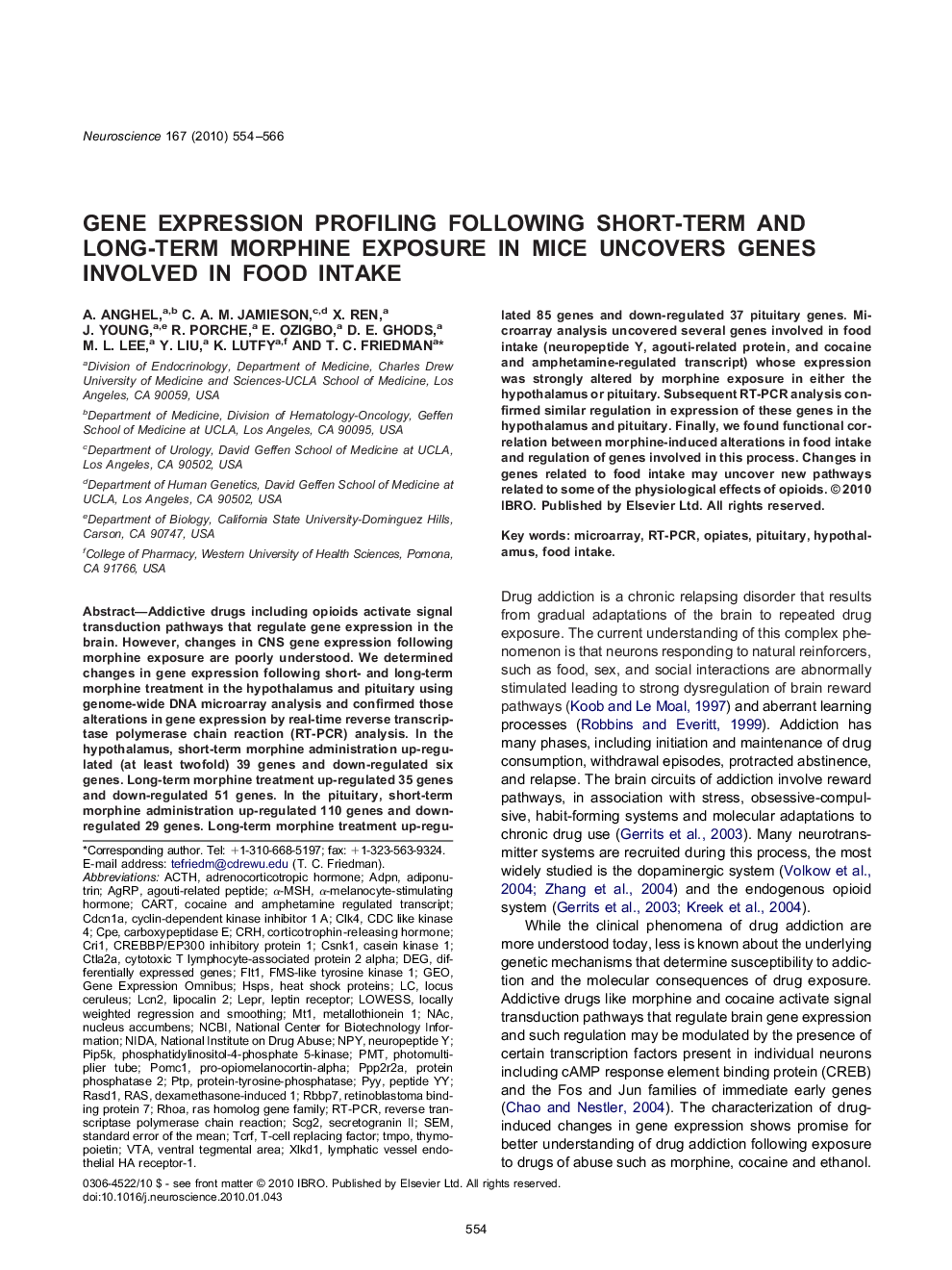| Article ID | Journal | Published Year | Pages | File Type |
|---|---|---|---|---|
| 6277666 | Neuroscience | 2010 | 13 Pages |
Abstract
Addictive drugs including opioids activate signal transduction pathways that regulate gene expression in the brain. However, changes in CNS gene expression following morphine exposure are poorly understood. We determined changes in gene expression following short- and long-term morphine treatment in the hypothalamus and pituitary using genome-wide DNA microarray analysis and confirmed those alterations in gene expression by real-time reverse transcriptase polymerase chain reaction (RT-PCR) analysis. In the hypothalamus, short-term morphine administration up-regulated (at least twofold) 39 genes and down-regulated six genes. Long-term morphine treatment up-regulated 35 genes and down-regulated 51 genes. In the pituitary, short-term morphine administration up-regulated 110 genes and down-regulated 29 genes. Long-term morphine treatment up-regulated 85 genes and down-regulated 37 pituitary genes. Microarray analysis uncovered several genes involved in food intake (neuropeptide Y, agouti-related protein, and cocaine and amphetamine-regulated transcript) whose expression was strongly altered by morphine exposure in either the hypothalamus or pituitary. Subsequent RT-PCR analysis confirmed similar regulation in expression of these genes in the hypothalamus and pituitary. Finally, we found functional correlation between morphine-induced alterations in food intake and regulation of genes involved in this process. Changes in genes related to food intake may uncover new pathways related to some of the physiological effects of opioids.
Keywords
LCN2PIP5KSecretogranin IIRASD1HSPsVTAmetallothionein 1NIDAMT1TMPOCARTPMTADPNα-MSHFLT1LEPRPYYlocus ceruleusACTHCPECRHNCBIprotein-tyrosine-phosphataseNACRas homolog gene familyGEOFMS-like tyrosine kinase 1RhoART-PCRPPP2R2ANPYAgRPCarboxypeptidase EPTPAdiponutrinthymopoietinstandard error of the meanMicroarrayDEGPituitaryphosphatidylinositol-4-phosphate 5-kinaseLowessphotomultiplier tubeLipocalin 2national institute on drug abuseOpiatesSEMNational Center for Biotechnology Informationfood intakeventral tegmental areaNucleus accumbensadrenocorticotropic hormonecorticotrophin-releasing hormoneα-melanocyte-stimulating hormoneHypothalamusreverse transcriptase polymerase chain reactionprotein phosphatase 2Heat shock proteinspeptide YYagouti-related peptideGene Expression OmnibusDifferentially expressed genescasein kinase 1cocaine and amphetamine regulated transcriptLeptin receptorNeuropeptide Y
Related Topics
Life Sciences
Neuroscience
Neuroscience (General)
Authors
A. Anghel, C.A.M. Jamieson, X. Ren, J. Young, R. Porche, E. Ozigbo, D.E. Ghods, M.L. Lee, Y. Liu, K. Lutfy, T.C. Friedman,
